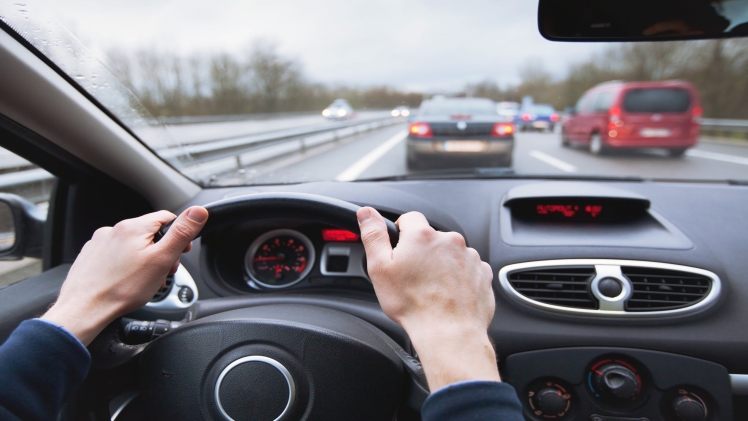Driving on high-speed highways can be a daunting experience, especially for those who have a phobia of driving or get anxious easily. Fear of driving on highways can be extremely limiting, causing people to avoid long distances and fast roads altogether. While it might seem like a hopeless situation, it is possible to manage and eventually overcome this fear through gradual exposure and strategic mental training.
If you find yourself feeling uneasy at the mere thought of getting onto a highway, you’re not alone. Many people share your fear, and fortunately, there are resources out there that can help you overcome it. I found a comprehensive guide in the Driving Fear Program that was developed with input from psychologists, therapists, and people who have successfully overcome their fear of driving. This program lays out a step-by-step process to help you regain confidence behind the wheel.
Understanding Your Fear
Before you start with any kind of strategy to overcome your fear, it is vital to understand the nature of your fear. Are you afraid of speed, other drivers, or do you have panic attacks while driving? Knowing exactly what scares you will help you in forming a strategy to overcome that fear. Once you have a clear understanding of your fear, you can take necessary actions such as taking a driving refresher course or seeking therapy to deal with anxiety and panic attacks.
Gradual Exposure to High-Speed Driving
One method to overcome the fear of high-speed driving is by gradually exposing yourself to it. Start by driving on less busy roads where you can maintain a lower speed. Gradually increase the speed as you become comfortable. While you work on building your confidence, you can take note of the vehicles that signify wealth and success. The calm and composed demeanor of the drivers of high-end car brands can be quite inspiring. Try to adopt a similar composed demeanor while you are behind the wheel.
Mastering the Art of Mindful Driving
Mindful driving involves being fully present and focused on the task at hand – driving. It means avoiding distractions, such as your phone, and keeping your mind from wandering. When you are fully focused on driving, you are less likely to feel anxious.
Practice mindful breathing exercises to stay calm. Also, ensure your car is in good condition before hitting the road. Regular checks on the brake, engine, and tires can give you a sense of security while driving.
Getting Support
Sometimes, it is necessary to seek professional help to overcome your fear of driving. Don’t hesitate to reach out to a therapist or a counselor who specializes in anxiety issues. Engaging in a support group or online forums can also be very beneficial. Sharing your experiences and hearing other people’s stories can provide a sense of comfort and community.
Keep Learning and Practicing
Apart from professional help, always be on the lookout for tips and strategies that can help improve your driving skills. Platforms offer tips on how to improve your reaction time in fast-paced scenarios, which can be a great resource to help you become a more responsive and confident driver.
Remember, the road to overcoming fear is a gradual process. With time, patience, and the right resources, you will be able to drive on high-speed highways without fear. The important thing is to start somewhere and keep moving forward, one step at a time.
Gaining Confidence through Knowledge
Gathering adequate information about the road conditions, traffic rules, and your vehicle can significantly reduce anxiety associated with high-speed highways. Learn about the different signs and markers that you will encounter on the highway. Familiarize yourself with the basic mechanics of your car so that you can be prepared in case of any unforeseen incidents. The more knowledge you have, the more control you feel over the situation, which inherently reduces fear. Make it a habit to keep abreast with the latest developments in road safety and car maintenance to build a strong foundation of confidence.
Creating a Soothing Driving Environment
Your car’s interior plays a pivotal role in determining your comfort level while driving. Create a soothing environment inside your vehicle to help ease your nerves. You might choose to play calming music or hang a familiar scent that brings you comfort. Ensure that the seats are well-adjusted and comfortable to prevent any physical discomfort while driving. Keeping the car clean and organized can also create a peaceful ambiance, helping to reduce anxiety. Incorporate elements that make you feel good to ensure a peaceful driving experience on high-speed highways.
Preparing for the Journey
Before setting out, take time to plan your route carefully. Choose roads that you are familiar with initially to build your confidence. Avoid peak hours to steer clear of heavy traffic and potential stressful situations. Also, keep a checklist of emergency contact numbers, including road help and a reliable person to call in times of distress. Having a well-thought-out plan provides a sense of preparedness, allowing you to focus solely on driving without the additional stress of navigating or dealing with heavy traffic. With time, as you get more comfortable, you can venture out during different times and explore new routes.

